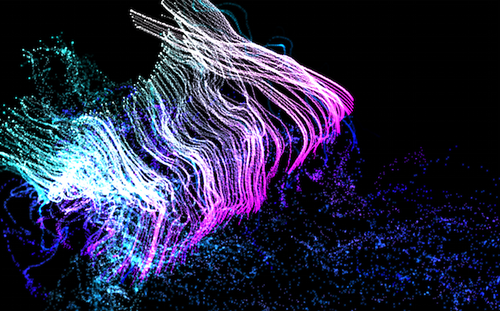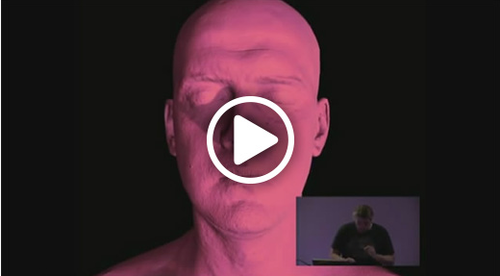When we joined artists and coders at Google San Francisco last week to talk about the future of the web, the consensus was clear: it’s time to truly unleash our creativity. Beneath our browsers is a robust engine waiting to break free. It’s more than a place to consume media and speedread viral headlines – it’s a platform to heighten our senses and challenge our minds.

Our growing developer community gets this. From education to global exploration to creativity to games, lots of the dynamic 3D experiences landing in Airspace live entirely online. Our own experience engineer Isaac Cohen is constantly pursuing new ways to infuse the web with emotion and art, so SFHTML5 asked him to speak to the crowd at Google about how he pulls magic from cyberspace using two secret ingredients: Leap Motion and WebGL.
What is WebGL? It’s a programming tool you can use with Leap Motion to bring awesome 3D experiences to life on the web. It can create universes so rich you feel like you could walk straight into your browser and live there. It strings massive pools of data into any glorious, rotatable, technicolor shape you can imagine. It sharpens and redefines the ways we can use technology to communicate. It makes the Internet a playground. And it helps us digitally replicate nature.
Isaac will be the first to assure you that none of us can be as brilliant an artist as nature itself – that snow-dappled mountains are “more elegant than any Bezier curve could hope to convey” and that the turtled bark of a bonsai tree “makes even the most processor-intensive physics simulation look like a crayon drawing.”
But Leap Motion and WebGL have inspired Isaac to dream big. With their powers combined, he can conjure the beauty of turbulent particles with the fluid authenticity of his own hands. Inspired in part by Eddie Lee’s Airspace hits Lotus and Kyoto, Isaac’s visualizers transport us into a “hyper-reality” – a version of nature that expands upon itself and taps directly into our senses in new ways.
Armed with these tools, we can learn to render our own “happy place.” We can mimic aspects of nature on the screen, such as the sun setting in the east, but then make it so that each gesture turns the sky a different, otherworldly hue. Stars that in real life only glint at us from eons away can turn into galaxies we can can maneuver around and transform with our hands.
Isaac’s interactive web experience was a recent recipient of the FWA’s Site of the Day Award. Watch the stream of Isaac’s talk here:


[…] January, Leap Motion Experience Engineer Isaac Cohen delivered a lively code sermon for an audience of over 500 HTML5 enthusiasts about how to create rich 3D universes for your […]
January 1, 2015 at 8:46 am